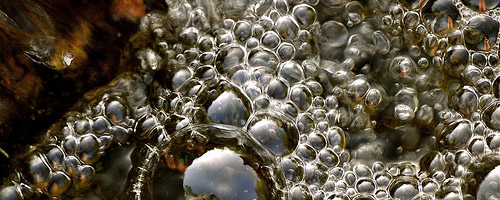Long Term DO Measurement

Establishing quality control data for dissolved oxygen (DO) measurement projects is essential for verifying the legitimacy of collected data as well as ascertaining causes for unusual or questionable data. Quality control data can be established through data “tagging.” At a minimum, this involves establishing quality control points both before and after the study. Quality assurance is improved if additional quality control points are established during the study.
Pre-Deployment: Before the unit is deployed, proper functioning of the dissolved oxygen sensor must be confirmed. On the day before deployment, set up and calibrate the unit. Remember that when calibrating the DO sensor for unattended monitoring, the RS-232 auto sleep function should be enabled in the sonde’s advanced menu. If connecting to a SDI-12 data logger, then the SDI-12 auto sleep function should also be enabled. When calibrating, record the DO charge and the DO gain. These serve as valuable diagnostic tools. The DO charge should be between 25% and 75%. Values falling near the outer boundaries of this range may indicate the probe is developing a problem and is unsuitable for a long-term unattended deployment. The DO gain should be between 0.7 and 1.5, ideally being near 1.0. After the unit is calibrated and the DO charge and gain have been recorded, put the unit in the discrete run mode at a 4-second rate and record the first 10 DO % numbers. The numbers should start at a high number and drop with each 4-second sample. If the probe begins at a low number and steadily climbs, the sensor has a problem and should not be used.
Once the unit is calibrated and the diagnostic data have been recorded and approved, begin unattended logging in a bucket of water fully saturated with air. Full air saturation can be accomplished with an aquarium pump and air stones in less than one hour. Allow the unit to log data overnight in the bucket, then upload and review the data before deploying the sonde in the field. The upload can occur with unattended logging active. Dissolved oxygen should be within a few percent of the calibrated values. If not, the unit should be recalibrated. Conductivity and pH values should also be confirmed as reasonable. Additionally, it is important to verify that the trend of the DO charge is stable. If the DO charge shows a downward or upward trend, or spikes greater than a few percent, do not deploy the sonde. The sonde should only be deployed after all pre-deployment data has been recorded and confirmed as acceptable.
Mid-Deployment: If possible, quality control data should also be gathered during the study. Recently calibrated meters can be used to periodically record data during the study. Alternatively, the unit can be pulled from the water to allow a few points to be logged in the air.
Post-Deployment: Post-deployment data is important in ensuring the sensor is still functioning properly and significant drift did not occur during study. When the deployment period has ended, remove the unit from the study area without terminating the data logging. Rinse debris from the sonde and probes while trying to avoid disturbing the face of the sensors. Transport the sonde to the lab in a controlled, water-saturated environment. One way to do this is to wrap the sonde (with sonde guard on) in a damp towel. Upon returning to the lab, put the sonde in a bucket of water saturated with air. Continue to sparge the water with air to maintain full saturation levels. The water must be aerated because debris on the unit may contribute a biological oxygen demand to the water. Allow the sonde to log for at least four times the logging interval. After an adequate amount of post-deployment data is collected, upload the data for review and analysis. Data logging can be terminated at this time.
A well-defined quality assurance program will confirm that readings during the study are correct and unaffected by calibration error or sensor malfunction. Depending on the environment, under-saturated or super-saturated readings may be common occurrences. Super-saturated readings (above 100%) may occur for numerous reasons, including the photosynthetic addition of pure oxygen to the water or non-ideal equilibration of water and the overlying air. Under-saturation may occur when biological or chemical oxygen demand exceeds oxygen replenishment of the system. Quality control points are needed to confirm the legitimacy of such readings.
Additionally, quality control data will help identify causes of suspect or erroneous readings. Inaccurate readings may be due to numerous reasons, including calibration error, fouling or tearing of the membrane, tarnished electrodes, and contaminated connections. Most of these sources of error are easily remedied. Checks to make throughout the study include verifying the DO charge is between 25% and 75% and evaluating the performance of other sensors in the study.





0 comments